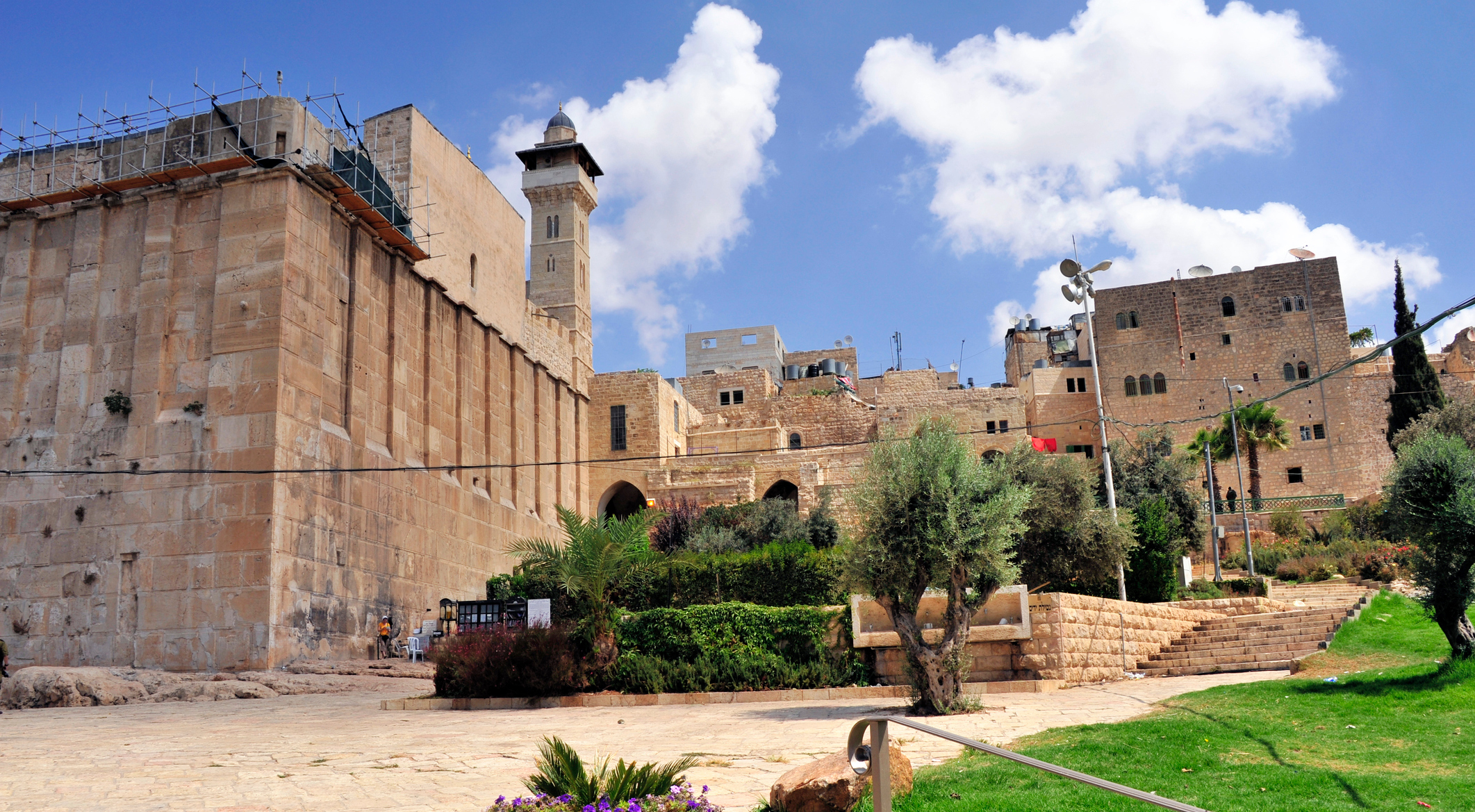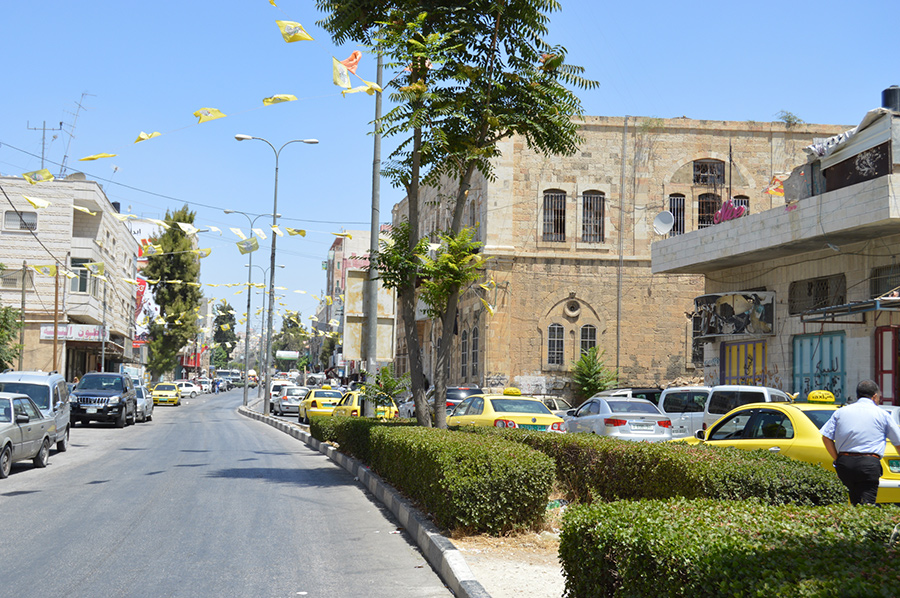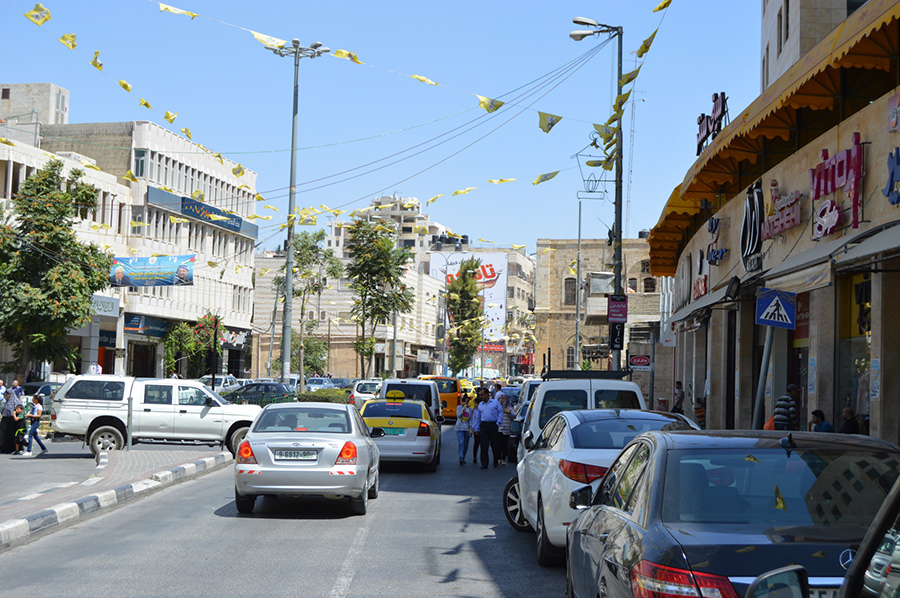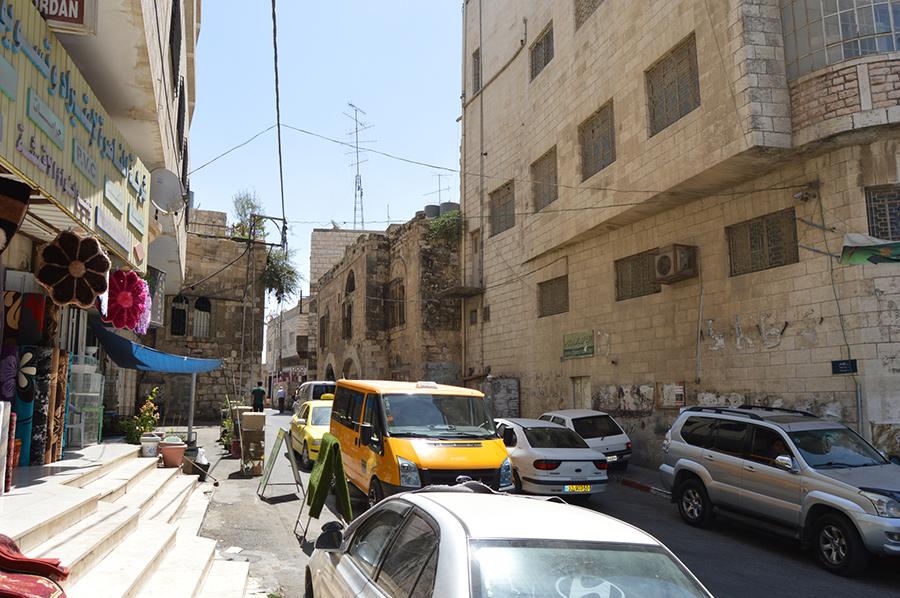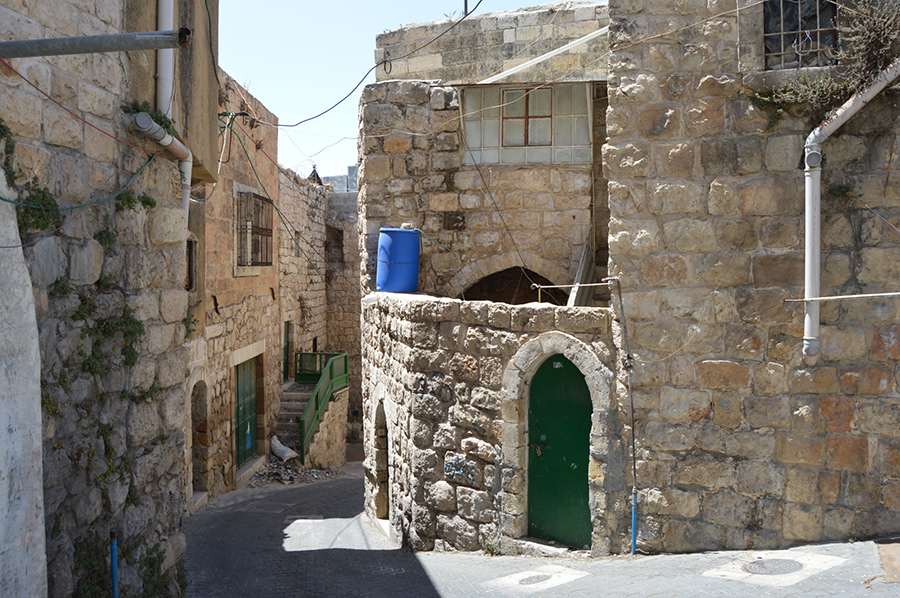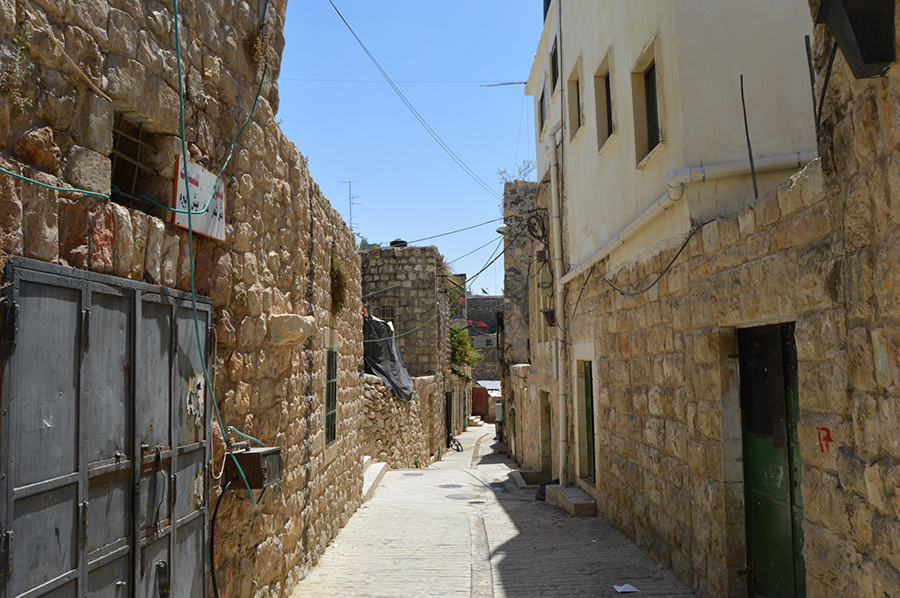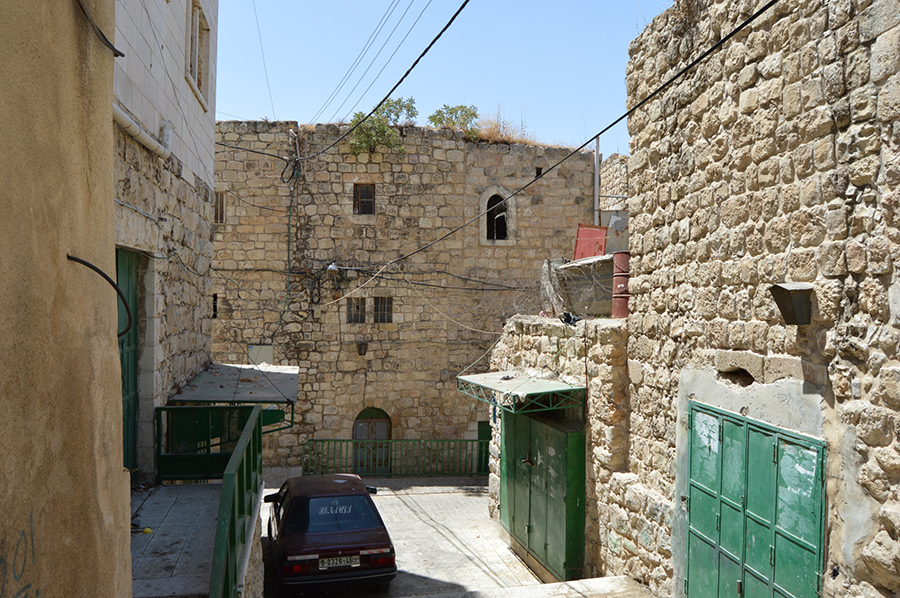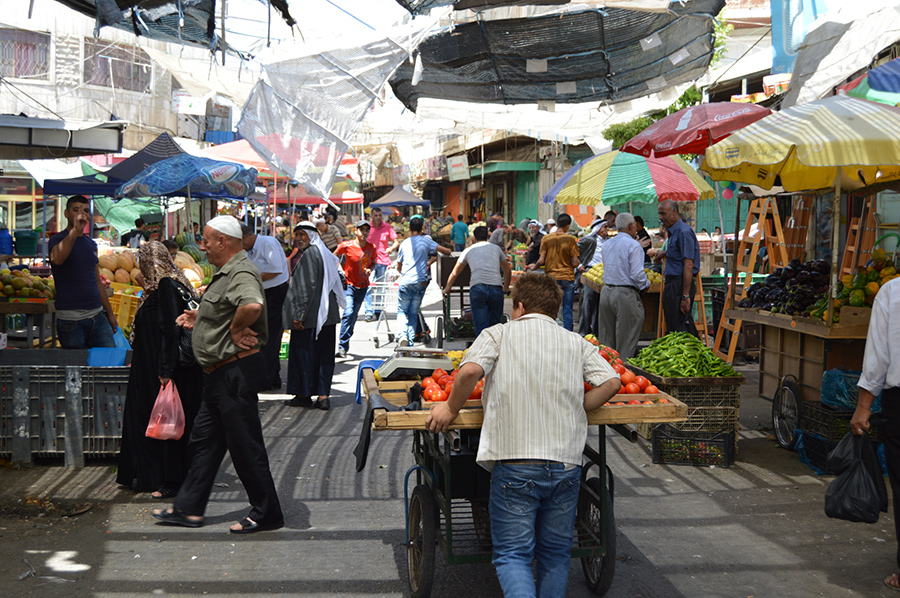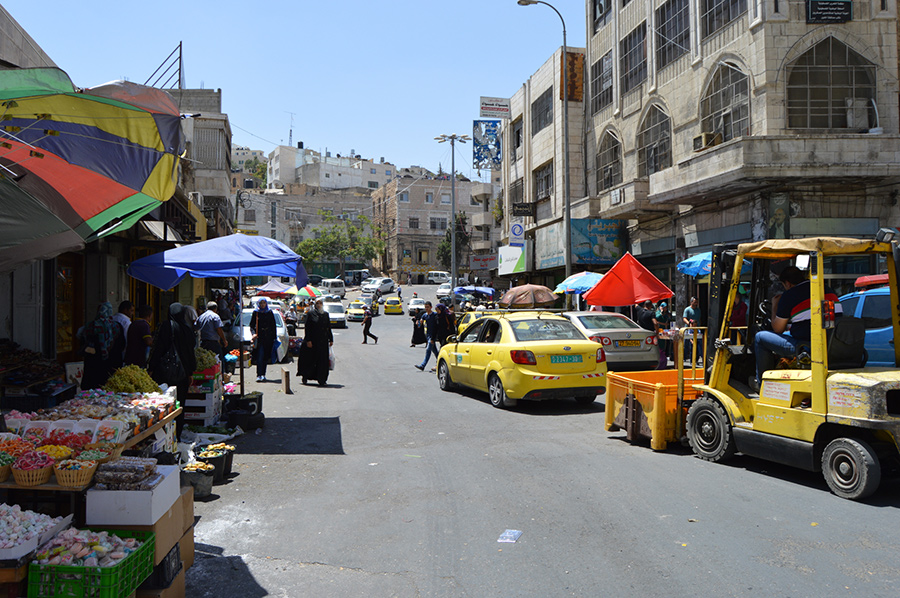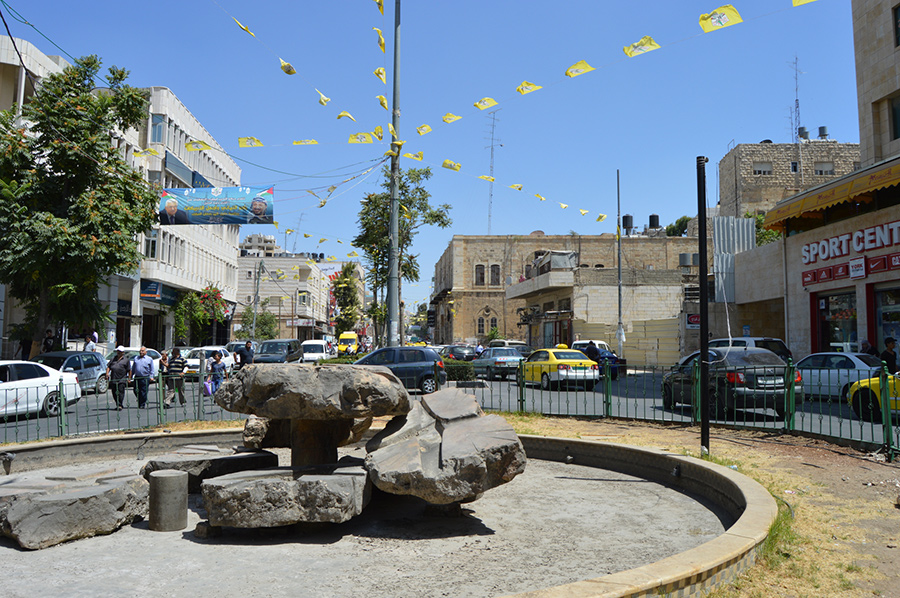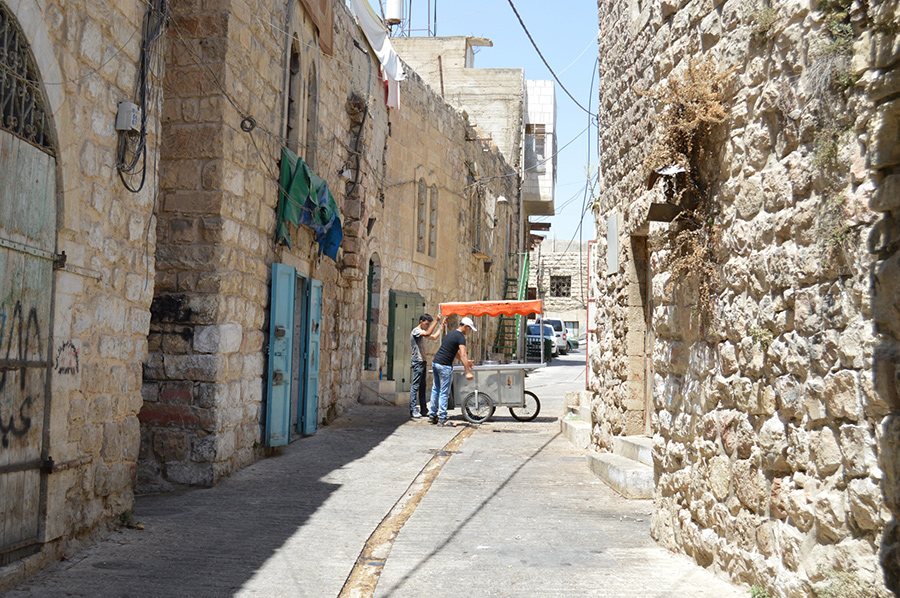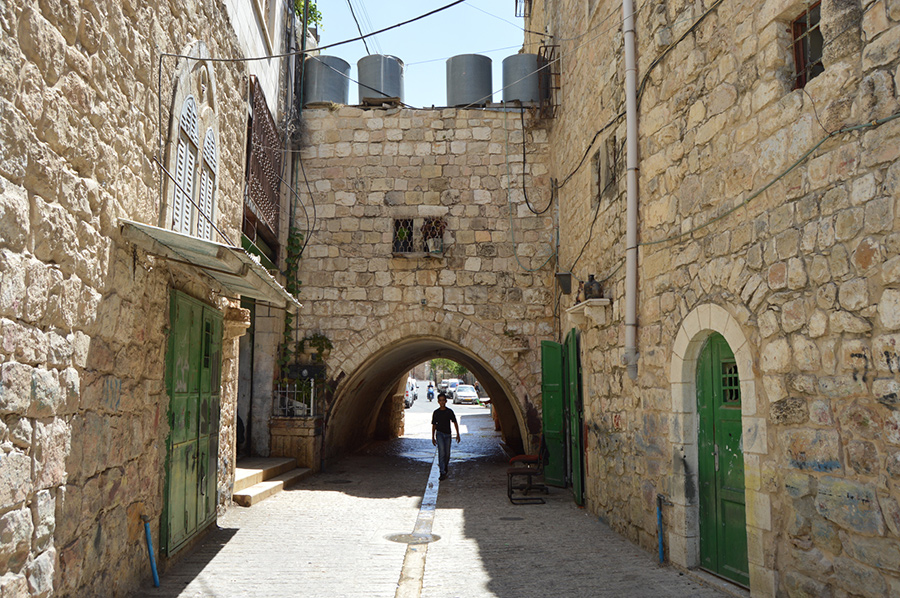Hebron City
Hebron is a hauntingly beautiful, ancient city twisted and torn by decades of unrest and conflict. It is the largest city in the West Bank, and second largest in Palestine after Gaza. It is home to around 215,000 Palestinians. Its Old City of stone roofs, archways and never-ending alleyways is the perfect playground for the sensory delight of the markets and bazaars. It is also a modernising city, home to Hebron University and the Palestine Polytechnic University. Hebron is a hub of trade, primarily with the sale of marble from nearby quarries. The area is also renowned for grapes, figs, limestone, pottery workshops and glassblowing factories, as well as the major dairy product manufacturer, al-Junaidi.
Although the Israeli-Palestine conflict has marred the city’s recent history, it is still evolving and adapting. At the heart of Hebron is an illegal Zionist settlement area (H2), roughly 20% of the city, administered by Israel and not, like the rest of the city (H1), by the Palestinian Authority. Much of the centre became a ghost town as Palestinians have shut up shop and moved out to escape Israeli checkpoints and conflict. The internationally funded Hebron Rehabilitation Committee has been working to repopulate the Old City over the last two decades, and it is doing a great job, renovating about 1,000 homes, 120 shops and 10 schools so far. The large Palestinian sector is a typically chaotic Arabic city where it is easy to get lost for many hours, although a friendly tour guide will almost always materialise when needed. By contrast, the Israeli settlement area is a ghost-like place, bleak and somewhat hostile to unknown visitors.
One of the oldest cities in the world, Hebron is probably best known for its biblical burial site within the Cave of the Patriarchs which can be visited by tourists. For this reason it is considered the second holiest city in Judaism after Jerusalem, hence the defiant settler movement. Hebron does not feel unsafe for visitors, but care should be taken to avoid protests and potential conflicts. Whatever you say about this city, it is impossible to ignore.

